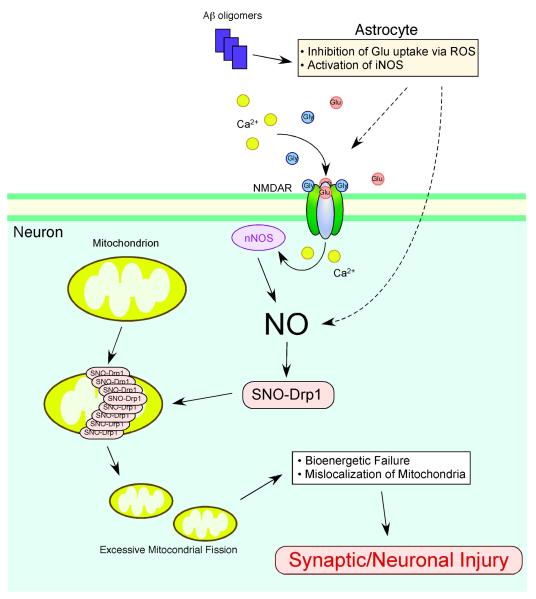Fig. 1.
Possible mechanism whereby S-nitrosylated Drp1 contributes to excessive mitochondrial fragmentation and neuronal injury. NMDAR hyperactivation triggers generation of NO and subsequent S-nitrosylation of Drp1 (forming SNO-Drp1), contributing to synaptic injury and eventually neuronal death. Soluble oligomers of Aβ peptide, thought to be a key mediator of AD pathogenesis, can facilitate neuronal NO production, potentially in both NMDAR-dependent and -independent manners. S-Nitrosylation of Drp1 can contribute to synaptic damage and neuronal cell death by triggering excessive mitochondrial fission and bioenergetic impairment.

